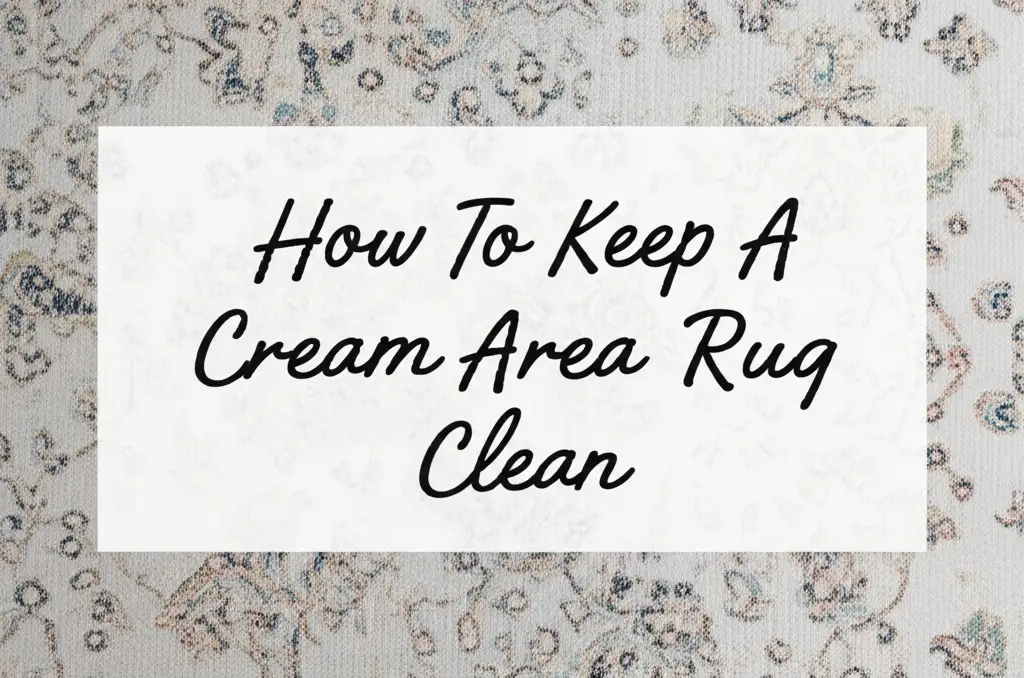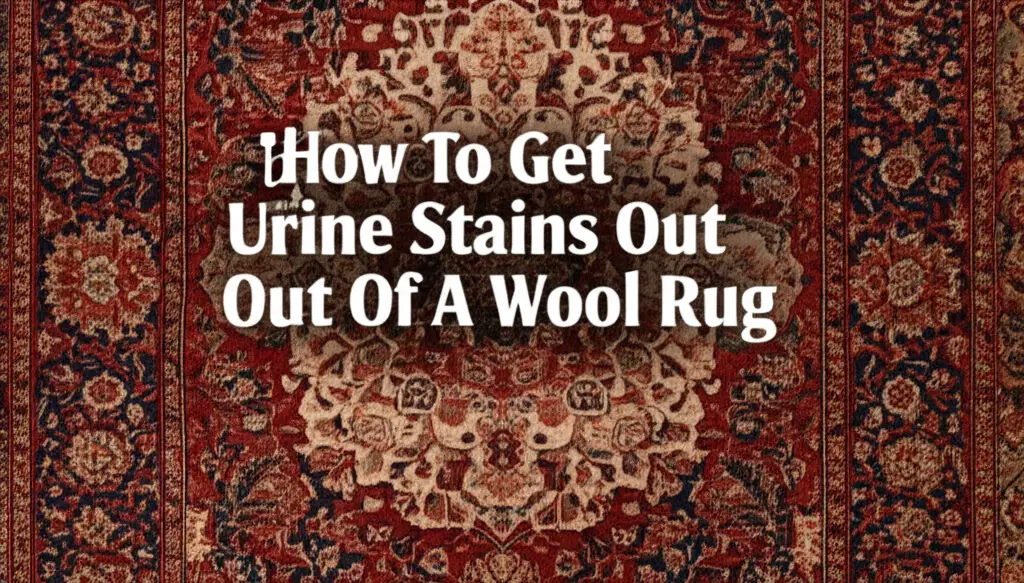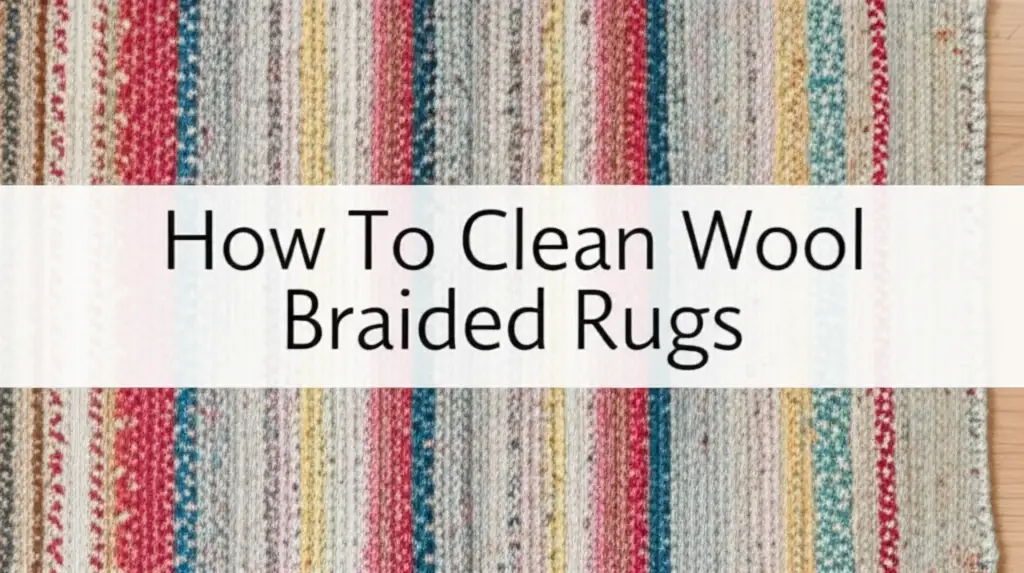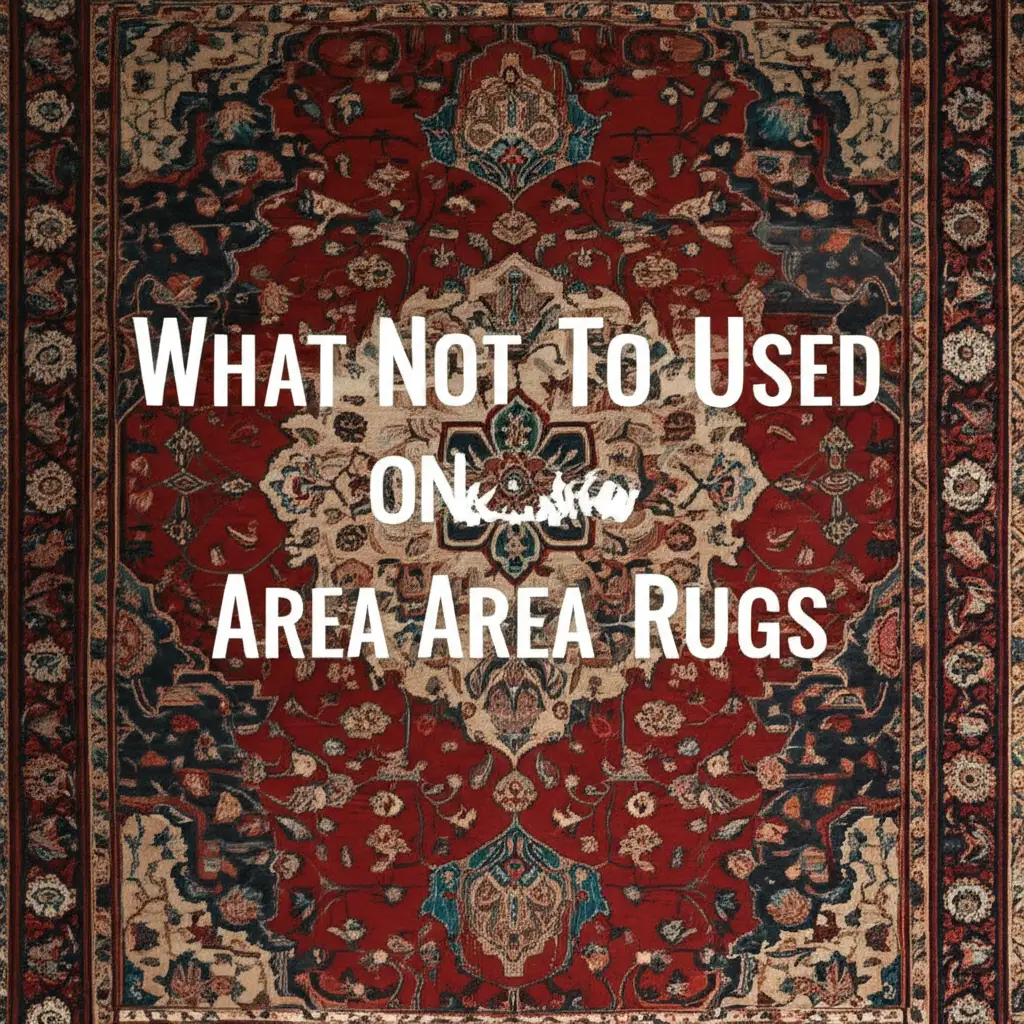· Elira Thomsen · Rug Care · 14 min read
How To Clean Spaghetti Sauce Off Area Rug
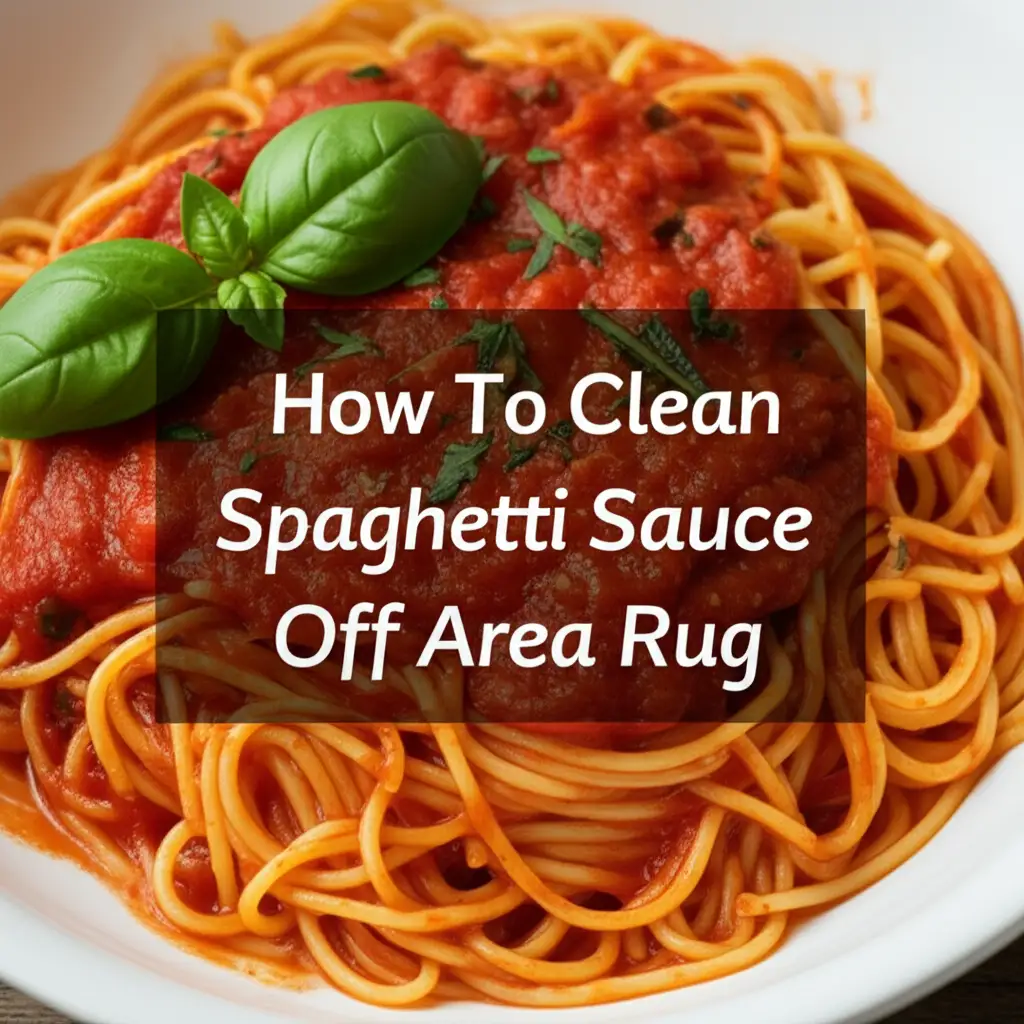
How To Clean Spaghetti Sauce Off Area Rug
Oh no, a spaghetti sauce spill on your beautiful area rug! This common household accident can feel like a disaster. Tomato-based sauces are notoriously difficult to remove due to their vibrant color and oily ingredients. The good news is, you do not need to panic. With the right approach and quick action, you can effectively clean spaghetti sauce off your area rug.
I have faced this exact situation myself, and I understand the frustration. This guide will walk you through proven methods. We cover everything from immediate spill response to deep cleaning techniques. You will learn about common household remedies and professional products. My aim is to help you restore your rug’s pristine condition.
Takeaway:
- Act quickly: Blot, do not rub.
- Scrape off solids immediately.
- Use gentle cleaning solutions first.
- Always test cleaners in an hidden spot.
- Ensure proper rinsing and drying to avoid new issues.
To effectively clean spaghetti sauce off an area rug, first blot the excess liquid. Then, apply a cleaning solution like dish soap and water. Work from the outside of the stain inward. Rinse thoroughly and allow the rug to dry completely. Prompt action significantly improves stain removal success.
Act Quickly: The First Steps to Stain Removal
A spaghetti sauce spill demands immediate attention. The longer a tomato sauce stain sits, the harder it becomes to remove. The pigments in the sauce can bond deeply with rug fibers. The oil content can also leave a greasy residue. My first piece of advice is always to act fast.
Blotting Techniques
The very first step is to absorb as much of the liquid sauce as possible. Grab a clean white cloth or paper towels. Press them firmly onto the spill. Do not rub the stain. Rubbing pushes the sauce deeper into the rug fibers. It can also spread the stain.
Blot from the outside of the spill towards the center. This action helps to keep the stain contained. Continue blotting with fresh sections of your cloth or new paper towels. Keep blotting until you no longer transfer sauce to the cloth. This step is crucial for minimizing the stain’s size and intensity. You can learn more about general red sauce removal techniques by visiting our guide on how to get red sauce out of carpet.
Removing Solids
Spaghetti sauce often contains solid bits, like tomatoes or meat. You need to remove these solids before applying any liquid cleaner. Use a spoon or a dull knife. Gently scrape these solids off the rug surface. Be careful not to push them deeper into the fibers.
Lift the solids straight up and dispose of them. This step prevents further smearing. It also makes the liquid cleaning process more effective. A clean surface allows your cleaning solution to work directly on the stain.
Homemade Solutions for Spaghetti Sauce Stains
Many effective cleaning solutions for spaghetti sauce are already in your home. These DIY options are often gentle on your rug. They are also cost-effective. Always test any solution in an inconspicuous area of your rug first. This test ensures the solution will not cause discoloration or damage.
Dish Soap and Water Method
Dish soap is excellent for breaking down the oily components of spaghetti sauce. Mix one teaspoon of mild dish soap with two cups of warm water. Use a clean white cloth. Dip the cloth into the solution. Do not saturate the rug.
Gently blot the stain with the dampened cloth. Start from the outer edge of the stain. Work your way inward. This method helps to prevent the stain from spreading. Continue blotting until the stain begins to lift. You may need to rinse your cloth and reapply the solution multiple times. This method is a great starting point for how to clean area rugs inside with simple ingredients.
Vinegar and Water Solution
White vinegar is a natural deodorizer and a mild acid. It can help break down stubborn stains. Mix equal parts white vinegar and water. Use this solution for blotting the stain. Apply it with a clean cloth, just as you did with the dish soap.
Vinegar is particularly useful for neutralizing odors that might accompany the sauce. It also helps to remove any lingering red tint. Blot the stain, then let the solution sit for a few minutes. Blot again with a clean, damp cloth to rinse the area. The vinegar smell will dissipate as the rug dries.
Baking Soda Power
Baking soda is a versatile cleaner and absorbent. After blotting and initial cleaning, you might still see a faint stain or an oily residue. Sprinkle a generous amount of baking soda directly onto the damp stain. Let it sit for several hours, or even overnight.
Baking soda absorbs moisture and odors. It also helps to lift any remaining sauce particles. Once dry, vacuum up the baking soda. You might be surprised by how much more of the stain disappears. For very tough stains, you can combine baking soda with a little water to make a paste. Apply the paste, let it dry, then vacuum. This method is also common when you learn how to clean a rug by hand.
Commercial Cleaners: When DIY Isn’t Enough
Sometimes, homemade solutions are not strong enough for a deep spaghetti sauce stain. This is especially true for older stains. Commercial rug cleaners offer more targeted stain removal power. When choosing a commercial product, read labels carefully. Select a cleaner designed for your rug’s material.
Selecting a Rug Cleaner
The market offers many types of rug cleaners. Some are sprays, some are foams, and others are liquids. Look for products specifically labeled for “red stains” or “food stains.” Check if the cleaner is safe for your rug’s fiber type. For instance, some cleaners are formulated for synthetic fibers, while others are gentle enough for natural fibers like wool.
Avoid cleaners with strong bleaches or harsh chemicals. These can damage your rug’s color or texture. I always recommend choosing an enzyme-based cleaner if possible. Enzymes break down organic stains effectively. This makes them ideal for food spills like spaghetti sauce.
Patch Testing Your Rug
Before applying any commercial cleaner to the visible stain, always perform a patch test. Find an inconspicuous area of your rug. This could be a corner under a piece of furniture. Apply a small amount of the cleaner to this spot. Wait for the recommended time on the product label.
Check for any discoloration, fading, or damage to the fibers. If the area looks good, the cleaner is likely safe to use on the main stain. If you see any negative reaction, do not use that product. Find an alternative cleaner. This test saves you from potentially ruining a larger section of your rug.
Application Tips
Once you have selected a safe cleaner, apply it according to the product instructions. Most cleaners recommend spraying or dabbing the solution onto the stain. Avoid oversaturating the rug. Too much liquid can lead to mold or mildew growth.
Blot the stain gently with a clean cloth. Work from the outside toward the center. This helps prevent spreading. Let the cleaner sit for the recommended time. Then, blot it up with a clean, damp cloth. Repeat the process if necessary. For larger or tougher stains, you might consider using a shampooer on an area rug if your rug material allows. This can provide a deeper clean.
Tackling Specific Rug Materials and Persistent Stains
Different rug materials react differently to stains and cleaners. Knowing your rug’s fiber type is important. This knowledge helps you choose the safest and most effective cleaning method. Old or dried spaghetti sauce stains also require a more persistent approach.
Cleaning Wool Area Rugs
Wool rugs are beautiful but delicate. They require specific care. Wool fibers are natural and can be sensitive to harsh chemicals. Avoid using hot water, strong alkalis, or highly acidic cleaners on wool. These can damage the fibers or cause shrinkage.
For wool rugs, stick to mild dish soap solutions or specialized wool cleaners. Blot gently. Do not rub vigorously. After cleaning, rinse thoroughly with cool water. Be sure to remove all soap residue. You can find more detailed guidance on how do you clean an area wool rug. Proper drying is also critical to prevent mildew and odor in wool.
Synthetic Rug Stain Removal
Most area rugs today are made from synthetic fibers like nylon, polyester, or polypropylene. These materials are generally more durable and stain-resistant than natural fibers. They can often withstand a wider range of cleaning products. You can use most commercial rug cleaners on synthetic rugs.
However, even with synthetic rugs, I still advise a patch test. Some dyes in synthetic rugs can bleed. Use blotting techniques to apply cleaners. Avoid excessive scrubbing that might damage the fibers. Synthetic rugs also dry faster than wool, which is a benefit. Keeping a cream-colored synthetic rug clean is a common concern, and similar principles apply, as discussed in how to keep a cream area rug clean.
Dealing with Dried or Old Stains
Dried spaghetti sauce stains are challenging. The sauce has had time to bond with the fibers. For these stains, you need patience and persistence. Start by re-wetting the stain with warm water. This helps to rehydrate the dried sauce.
Then, apply your chosen cleaning solution. Let it sit for a longer period than for fresh stains. You might need to gently agitate the area with a soft brush. Work the solution into the stain. Repeat the cleaning and rinsing steps multiple times. For very stubborn, dried-in stains, an enzyme cleaner is often the best option. These enzymes actively break down the stain’s molecular structure.
The Final Rinse and Drying Process
After cleaning, proper rinsing and drying are just as important as the cleaning itself. Leaving cleaning solution residue in your rug can attract dirt. This creates new stains. Incorrect drying can lead to mildew, odors, or even damage to your rug’s backing.
Rinsing the Area
Once the stain has lifted, you must rinse the area thoroughly. Fill a spray bottle with clean, cool water. Lightly mist the cleaned area. Use a fresh, clean, dry cloth to blot up the water. This process removes any remaining cleaning solution. Repeat this step several times.
Ensure you are removing all soap residue. Soap left in the rug acts like a magnet for dirt. This can cause the spot to reappear or look dingy over time. Your goal is to leave the rug as free of cleaning chemicals as possible.
Proper Drying Methods
Allowing your rug to dry completely is crucial. If the rug remains damp, it can develop mildew or a musty odor. Place several layers of dry paper towels or a clean, dry towel over the damp spot. Press down firmly to absorb more moisture.
You can also elevate the cleaned area. Place it on a few blocks or cans. This allows air to circulate underneath the rug. Point a fan directly at the spot to speed up drying. Avoid walking on the damp area until it is fully dry. Sunlight can also help dry the rug and naturally bleach any faint remaining discoloration.
Preventing Mildew and Odor
Thorough drying prevents mildew and odors. Mildew thrives in damp, dark environments. If your rug smells musty after cleaning, it likely did not dry completely. If this happens, you may need to re-clean the area. Ensure it dries properly this time.
Sprinkling baking soda over the dry, clean area can absorb any lingering odors. Let it sit for an hour, then vacuum it up. Consider using a dehumidifier in the room if humidity is high. Proper air circulation is your best defense against moisture-related issues.
Prevention and Maintenance for a Spotless Rug
Preventing stains is always easier than removing them. While spills happen, a few proactive steps can save you a lot of cleaning effort. Regular maintenance also keeps your area rug looking its best.
Protective Measures
Consider applying a fabric protector to your area rug. Products like Scotchgard create a barrier on the fibers. This barrier makes it harder for spills to penetrate. Liquids bead up on the surface, giving you more time to blot them away. Reapply fabric protector every 1-2 years or after deep cleaning.
Place doormats at all entry points to your home. These trap dirt and debris before it reaches your rugs. Use rug pads under your area rugs. They prevent slipping and provide an extra layer of protection. A good rug pad can also make your rug feel more luxurious.
Regular Cleaning Practices
Vacuum your area rug regularly. This removes loose dirt and dust. These small particles can grind into the rug fibers. Over time, they can cause wear and dullness. Weekly vacuuming is a good habit. For high-traffic areas, vacuum more often.
Consider professional rug cleaning every 12-18 months. Professionals have specialized equipment and knowledge. They can deep clean your rug without damaging it. This extends your rug’s life and keeps it looking fresh. My family has always found this investment worthwhile for our larger rugs.
Immediate Spill Response
Even with protective measures, spills happen. Always keep a spill kit handy. This kit should include clean white cloths, paper towels, and a mild dish soap solution. My own kit also includes a small spray bottle of white vinegar.
Being prepared means you can react immediately to any spill. The faster you act, the greater your chance of complete stain removal. Quick action saves time and effort in the long run. It also protects your investment in your beautiful area rug.
FAQ Section
How long can a spaghetti sauce stain stay on a rug before it’s permanent?
A spaghetti sauce stain can become permanent quickly. The longer it sits, the harder it is to remove. Pigments from the tomato and oil can bond to rug fibers within hours. For best results, clean the stain immediately.
Can I use hydrogen peroxide to remove spaghetti sauce?
Hydrogen peroxide can remove red stains, but use it with caution. It can bleach certain rug fibers, especially natural ones like wool. Always test hydrogen peroxide on an inconspicuous area first. Dilute it with water before use.
What if the spaghetti sauce stain has dried?
For dried spaghetti sauce, first rehydrate the stain with warm water. Then, apply your chosen cleaning solution. Let it sit for a longer period. You may need to gently agitate the area with a soft brush and repeat the process multiple times.
Is baking soda effective on old spaghetti sauce stains?
Baking soda is more effective on fresh or slightly damp stains as an absorbent. For old, dried stains, it works best after you rehydrate the stain and loosen it with another cleaner. It helps absorb remaining moisture and odors.
Should I rub or blot a spaghetti sauce stain?
Always blot a spaghetti sauce stain. Rubbing pushes the sauce deeper into the rug fibers. It can also spread the stain. Blotting with a clean cloth absorbs the liquid without forcing the stain to spread or set.
When should I call a professional rug cleaner?
Call a professional rug cleaner if the stain is very large, if it’s an old or stubborn stain you cannot remove yourself, or if you have a delicate or expensive rug. Professionals have specialized tools and expertise to clean without damaging your rug.
Conclusion
Cleaning spaghetti sauce off an area rug is a common challenge for many homeowners. It might seem daunting at first. However, with the right steps and products, you can effectively remove even the most stubborn red stains. Remember, speed is your best friend when dealing with any spill. Act quickly, blot the excess, and choose your cleaning solution wisely.
Whether you opt for simple homemade remedies or specialized commercial products, always test them in an hidden spot first. Proper rinsing and drying are also critical steps. They prevent further issues like mildew or residue buildup. By following these steps, you can keep your area rug looking fresh and clean for years to come. Do not let a spill spoil your beautiful home decor. You have the knowledge now to tackle any spaghetti sauce mishap with confidence.


